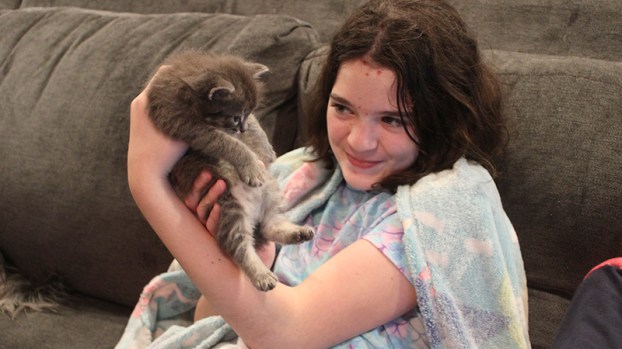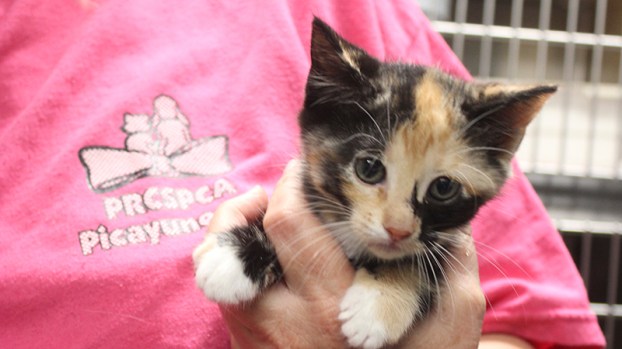Out of a cage and into a home
Published 4:02 pm Friday, March 26, 2021
Melissa Petersen’s home is full of animals: kittens, cats, dogs, a puppy and a bunny rabbit. Some are there to stay and others are passing through.
Petersen regularly acts as a foster for animals from the Pearl River County SPCA.
“It’s been such a good experience for the kids,” said Petersen, “learning it’s okay to love it and let it go.”
Petersen has been fostering animals for the SPCA for seven years, and her two daughters and son have all benefited from the experience. Not only do they get to play with the adorable kittens and puppies that come into their home, most of all they learn about animal care. At 12-years-old, Petersen’s daughter Elizabeth has learned about mixing vaccines at the shelter and 10-year-old Rebecca assists her mom with kitten enemas.
With kitten season in full swing, the SPCA is in desperate need of more people who are willing to be fosters by providing temporary care for animals, which opens up more space at the shelter.
“We especially have got mamas and babies that need to go into homes,” said Pearl River County SPCA spokesperson Maria Diamond. “They’re sitting there in the shelter and take up cage space and then they’re vulnerable to sickness also. So we really, really, really need to get them into foster homes.”
Mama cats with kittens are some of the easiest animals to foster, because the mother cats do most of the work of caring for the kittens. Fosters simply need a safe room in their house to keep the cats, to feed the mama cat and to regularly scoop a litter box. The shelter provides all supplies and any medications needed for foster animals.
“They grow very fast and there’s nothing more fun than watching a bunch of kittens hopping and playing,” said Diamond.
The shelter also needs fosters for other vulnerable cats and dogs, including animals that are sick or injured, too young for adoption, in need of extra socialization or need time to recover from surgery before being adopted. These necessary volunteers can choose what kind of animal they’d like to foster. The commitment can mean caring for animals for one to eight weeks. Fosters must be at least 21-years-old.
Fostering is a critical component of the shelter and saves animal’s lives, said Diamond.
“We’re working toward becoming a no kill shelter so our live release rate has to be up in the 90 percent. In order to do this foster care is essential. We have to get pets out of the shelter and into homes to open up cages for other pets coming in.”
Fostered kittens and puppies get used to being in a home before being adopted. By the time they leave the Petersen’s home, fostered kittens have grown accustomed to being around dogs, cats and children, making them better prepared to adapt to a new home and easier to find forever homes.
The Petersen’s dogs love puppies and they have some very maternal cats that are happy to groom foster kittens.
Some of the most wonderful moments for Melissa Petersen are seeing families adopt animals she’s fostered. One of the dogs she cared for last year was a pure breed German Shepard with a medical issue that made it difficult for the canine to gain muscle and fat.
However, with a little research, Petersen discovered the condition was easy to manage by adding a specific enzyme to the dog’s food.
With its health issues managed, the dog was adopted by a family who are “head over heels in love with that dog.”
“It’s a match made in heaven,” said Petersen.
Applications to become a foster are available at the shelter or on the shelter’s website.









